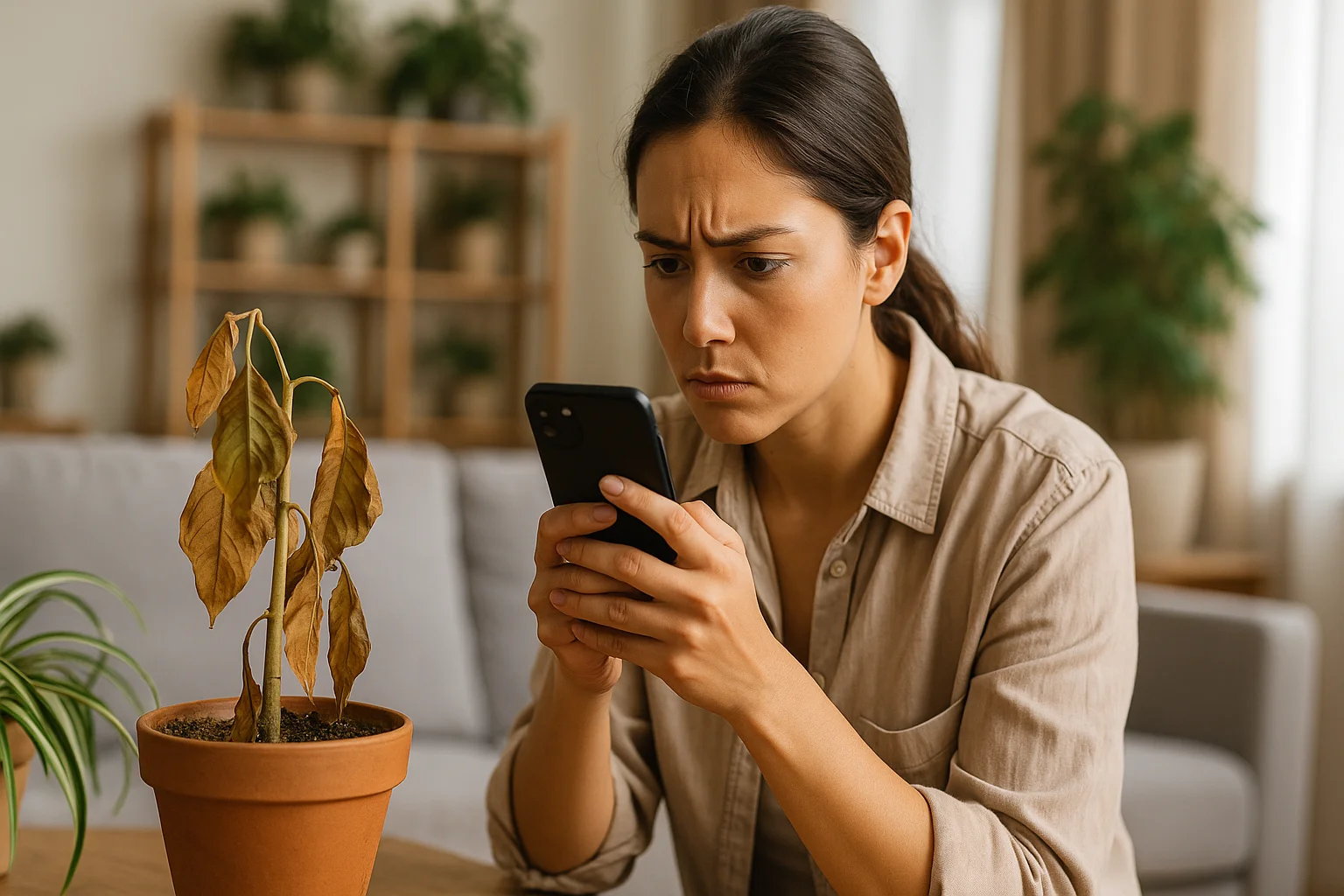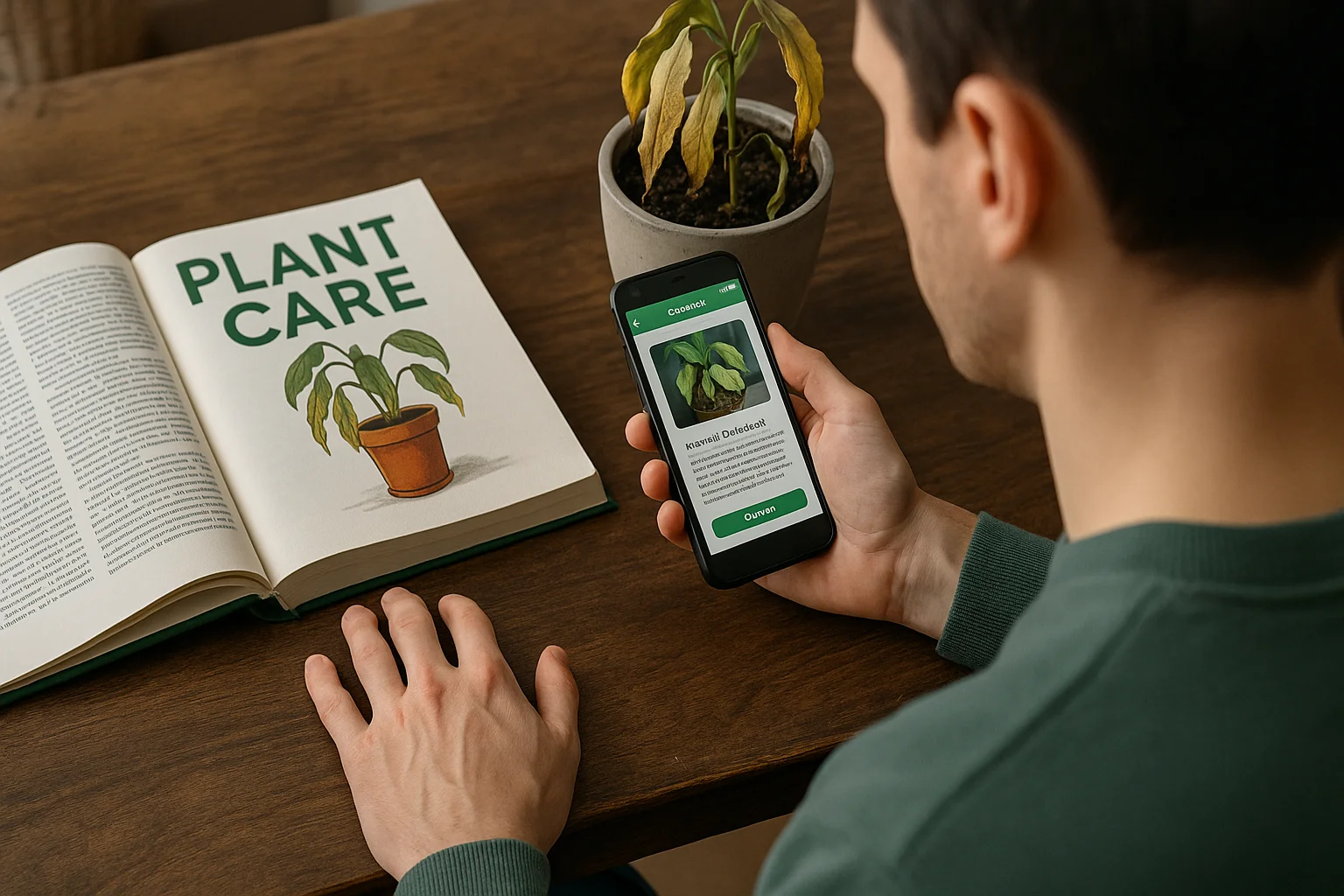Can AI Save Your Dying Plant? Testing Digital Diagnosis Tools
Walk into any home with a few green companions and you’ll notice the same story repeated: some plants thrive, others struggle, and no one seems to know why. A glossy monstera might unfurl a new leaf every week, while a nearby orchid sheds flowers and sulks for months. For many plant lovers, the frustration begins with the not-knowing. Is it too much water? Too little light? Pests hiding in the soil?
In the past, solving the mystery meant guesswork, trial and error, or waiting until the problem became too obvious to miss. But today, a new ally is stepping in: technology. With something as simple as a plant id photo, you can name your plant in seconds, and digital tools now go further — spotting symptoms of disease, warning about pests, and suggesting care adjustments before the decline becomes fatal.
The question is: can AI really save your dying plant, or is this just another over-hyped promise? Let’s find it out.
Why Plants Decline: The Hidden Triggers
Every plant owner has had that moment of panic: leaves yellowing, edges browning, soil that seems perpetually too wet or too dry. The reasons behind decline are surprisingly complex.
Plants evolved in very specific environments. Move them indoors, and their natural rhythm gets disrupted. What’s harmless in the wild becomes harmful on your windowsill.
Water imbalance is the biggest culprit. Overwatering suffocates roots; underwatering leaves them desiccated.
Light mismatch is another. A plant adapted to shady forest floors will scorch in direct sun, while a desert succulent languishes in dim hallways.
Nutrient issues creep in when soil is depleted or fertilization is too heavy-handed.
Pests and diseases — from spider mites to fungal infections — often sneak in unnoticed until damage is widespread.
The tricky part? Many symptoms look alike. Yellow leaves could signal overwatering, underwatering, or nitrogen deficiency. A drooping stem might be dehydration… or root rot. That’s why quick, accurate diagnosis matters. The earlier the cause is identified, the higher the chance of saving the plant.

How Digital Diagnosis Tools Work
At first glance, it feels magical: snap a photo, and your phone tells you what’s wrong. But under the surface, these tools rely on a mix of computer vision and data science.
When you upload a photo of your plant:
The app breaks the image down into features — leaf shape, vein structure, texture, and color distribution.
These features are compared against a massive library of labeled images.
Algorithms look for probability matches — which condition is most likely based on what the photo shows.
Think of it like facial recognition, but for leaves and stems. The more diverse the database (plants photographed under different light conditions, at different stages of disease), the more accurate the result.
Some apps don’t stop at naming the disease. They provide care guidance, suggest remedies, or even track your progress if you log follow-up photos. Crowdsourced uploads mean the tools get smarter over time. A fungal spot misidentified last year may now be recognized correctly because thousands of users submitted similar photos.
Putting Apps to the Test: A Top 3 Comparison
There are dozens of plant apps on the market, but not all deliver equal results. To understand what works, let’s look at three of the most trusted names.
AI Plant Finder
This app combines identification with practical care tools. The app recognizes over 300,000 species and diagnoses leaf diseases with about 98% accuracy. At the same time, the app does more than just naming, it supports daily routines through features like a Light Meter, Water Calculator, and My Garden Tool, turning it into a full plant companion rather than a one-off scanner.
Strengths: high accuracy, early disease detection, extra tools for care.
Weaknesses: requires internet connection.
Best for: owners who want both ID and ongoing plant management.
PlantSnap
This is one of the pioneers in plant recognition, and it is known for its global reach and speed. Its large database covers species worldwide, making it a solid option for travelers and casual users. Results usually appear within seconds, though the interface feels dated and the free version has many ads.
Strengths: fast recognition, very large database, good for travel.
Weaknesses: cluttered interface, ad-heavy free version.
Best for: beginners or hikers who need quick answers.
PictureThis
PictureThis offers a modern, user-friendly design with solid accuracy for common houseplants and ornamentals. It pairs identification with basic care notes and lets users log their plants, creating a small digital collection. While its tips can be too generic for rare species, it’s convenient for everyday greenery.
Strengths: clean design, reliable with common plants, extra care tips.
Weaknesses: subscription for advanced features, advice not detailed for rarities.
Best for: users who want quick IDs with light care guidance.
Quick Comparison Table
App | Pricing Model | Offline Use | Extra Features Available | Best Fit For |
AI Plant Finder | Freemium (premium unlocks advanced tools) | No | Light Meter, Water Calculator, My Garden Tool | Owners who want ID + care support |
PlantSnap | Freemium (ads in free version, premium for ad-free) | Partial (limited library) | Global species coverage, travel-friendly database | Hikers and beginners |
PictureThis | Subscription-based | No | Plant logging, general care tips | Everyday users seeking simplicity |
Testing two or three apps side by side is often the smartest strategy. Over time, you’ll naturally gravitate toward the one that fits your routine.
When Apps Shine — and When They Struggle
Digital diagnosis is powerful, but not foolproof. The best results happen when:
You catch early signs: tiny fungal spots, pale streaks, or speckled leaves from mites.
You take clear, natural-light photos, showing both the affected leaf and the whole plant.
You log follow-up images so the app can refine its suggestions.
But there are limits. Apps may misread:
Rare varieties, especially hybrids not well-documented in the database.
Multiple issues at once, like a plant both underwatered and attacked by pests.
Very poor photos — blurry, dim, or washed out.
Field tip: treat the diagnosis as a starting point, not the final verdict. Cross-check with care notes. If the app says “fungal rot” but your soil is bone-dry, you may need a second opinion.
Beyond Names: Why Speed Matters in Diagnosis
Plant problems don’t wait. A disease that looks like a harmless spot can double in size overnight. By the time you notice the whole leaf is yellow, the infection may already be spreading underground.
Take powdery mildew: catch it on day one, and a simple spray of baking soda solution often stops it. Wait a week, and the fungus spreads across the plant, requiring stronger treatment or even pruning.
The same is true for pests. Spider mites start as a few pinpricks on leaves. With quick action, they’re manageable. Ignore them, and within weeks you’ll find webs covering entire stems.
That’s why fast feedback from apps is so valuable. You don’t need to book an expert consultation; you can act immediately. Even if the diagnosis isn’t perfect, it gives you a direction instead of waiting until it’s too late.
Integrating Tech With Traditional Care
Relying on apps alone is a mistake. Diagnosis is half the story; ongoing care is the other half.
For instance, if an app flags “chlorosis” (yellowing from nutrient deficiency), the fix isn’t just fertilizer. You also need to check:
Is the soil compacted, preventing absorption?
Is the watering routine diluting nutrients?
Is light sufficient for photosynthesis?
Combining digital suggestions with hands-on checks makes care more reliable.
One practical method: create a weekly photo diary. Snap a picture of each plant, label it with date and location, and store it in a folder. Apps can analyze these over time, and you’ll see changes you might otherwise miss. Subtle shifts — a paler green, smaller new leaves, slower growth — become obvious in comparison.
This habit turns diagnosis into prevention, and you don’t just react to problems; you anticipate them.

Facts and Misconceptions About Digital Plant Diagnosis
A lot of myths surround plant ID and diagnosis tools. Let’s set the record straight.
“Apps just guess randomly”.
Wrong. They analyze measurable features — leaf veins, edges, textures — against thousands of examples.
“One blurry photo is enough”.
Not true. Sometimes you need multiple angles, including stems and flowers.
“Errors make apps useless”.
No tool is perfect. But even an imperfect diagnosis narrows possibilities, speeding up your response.
“Apps replace human expertise”.
They complement it. Apps give instant insights; vets, botanists, and experienced growers provide the depth.
“All apps work offline”.
Rarely. Most need the internet to access full databases. Only limited functions (like care reminders) usually work without connection.
Remember: technology is a tool, not a miracle cure. And here the most important thing is knowing when to trust it and when to dig deeper.
Digital Help, Real Plants
So, can AI save your dying plant? In many cases, yes — not because it performs magic, but because it brings speed and clarity. Apps can highlight problems while they’re still small, give direction when symptoms look confusing, and help you act before it’s too late.
The smartest tactic is balance. Use tools like AI Plant Finder for quick insight and reminders, but pair them with traditional observation: checking soil, adjusting light, and monitoring growth. Together, they form a safety net that turns uncertainty into confidence.
Caring for plants will never be a zero-effort task. But with digital allies on your side, and with them your experience is far more rewarding.
